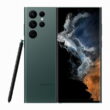
In today’s digital age, live streaming has become increasingly popular as a way to connect with audiences in real-time. Whether you’re a content creator, a vlogger, or a social media influencer, live streaming allows you to engage with your viewers and share your experiences as they happen. One essential aspect of live streaming is having a high-quality camera to capture your content. In this article, we will guide you through the process of connecting a camera to your phone for live streaming, ensuring that you can produce professional-quality streams with ease.
Why Connect a Camera to Your Phone for Live Streaming?
Before we dive into the technical details, let’s first understand why connecting a camera to your phone for live streaming is beneficial. While most smartphones nowadays come equipped with decent built-in cameras, they may not provide the same level of quality and versatility as dedicated cameras. By connecting an external camera to your phone, you can leverage the advanced features and superior image quality that these cameras offer, enhancing the overall production value of your live streams.
Step 1: Check Camera Compatibility
The first step in connecting a camera to your phone for live streaming is to ensure that your camera is compatible with the necessary connectivity options. The most common method of connection is through USB, specifically using the USB Video Class (UVC) standard. This standard allows you to connect various cameras, including wearable cameras, webcams, microscopes, endoscopes, as well as DSLR cameras, camcorders, and drones with an HDMI-UVC capture card.
To determine if your camera is compatible, check if it supports USB UVC or HDMI output. USB UVC cameras can be directly connected to your smartphone’s USB port using an OTG (On-The-Go) cable. For DSLR cameras and other devices with HDMI output, you will need an HDMI-UVC capture card to convert the HDMI signal into a format that your phone can recognize.
Step 2: Gather the Required Equipment
To connect a camera to your phone for live streaming, you will need the following equipment:
- Camera with HDMI output: Ensure that your camera supports clean HDMI output, which means it does not display any onscreen data indicators such as recording status, exposure settings, battery charge, etc. Additionally, check if your camera can output both audio and video, as some DSLR cameras only provide video output through HDMI.
- HDMI-UVC capture card: We recommend using the ExtremeCap UVC – BU110 from AVerMedia, as it is designed for mobile use and consumes minimal power from your smartphone. However, there are various capture cards available on the market, so make sure to choose one that suits your specific needs and works well with your smartphone.
- OTG cable: If your camera is a USB type A device, you will need an OTG cable that is compatible with your smartphone’s USB port (micro USB or USB type C). This cable allows you to connect your USB camera directly to your phone.
Optional:
- USB-C multi-adapter and portable charger: If you plan to stream for extended periods, connecting a capture card to your smartphone can drain the battery quickly. To overcome this, some streamers use a USB-C multi-adapter and a portable charger to charge their smartphones while live streaming. Note that low-end smartphones may experience issues due to heat generated during power supply.
Step 3: Connecting Your Camera to Your Phone
Now that you have gathered all the necessary equipment, let’s walk through the process of connecting your camera to your phone for live streaming:
- Connect the HDMI output of your camera to the HDMI input of the HDMI-UVC capture card using an HDMI cable.
- Plug the USB end of the HDMI-UVC capture card into your phone’s USB port using the appropriate OTG cable.
- Launch your preferred live streaming app on your phone. Many popular streaming platforms, such as YouTube, Facebook Live, and Instagram Live, have their own dedicated apps that you can download from your phone’s app store.
- In the live streaming app, select the camera source as the external camera connected through the HDMI-UVC capture card. Depending on the app, this option may be located in the settings or preferences menu.
- Once the camera source is selected, you should see the live feed from your camera on your phone’s screen. You can now start live streaming and engage with your audience in real-time.
Frequently Asked Questions
Is 4K resolution available for live streaming?
While 4K resolution is highly desirable for its superior image quality, it is not currently feasible for live streaming with the current mobile environment. USB devices require significant CPU resources for data transfer, and simultaneous decoding, encoding, and network streaming can strain even the latest smartphones. In our tests, 720p (1280×720) at 60fps has proven to be the optimal choice for live streaming, even with high-end smartphones like the Samsung Note 20. Our team is continuously working on reducing CPU usage and improving performance, aiming to support 3840×2160 (4K) at 30fps and 1920×1080 (FHD) at 60fps in the future.
I cannot see the camera feed when I connect the USB camera. What should I do?
This is a common issue that can have multiple causes. To troubleshoot the problem, follow these steps:
- Check if your DSLR camera supports HDMI output. Some cameras may have limitations on video and audio output.
- Ensure that your HDMI-UVC capture card is functioning properly.
- Verify that your smartphone or OTG cable supports the OTG function. Without OTG support, your capture card will not be recognized by your phone.
- Low-priced smartphones using certain APs (Application Processors), such as Mediatek, HiSilicon Kirin, Spreadtrum, or low-end Exynos, may have limited support for large data transmission via USB.
- Check if power supply issues are causing the problem. Some smartphones may experience failures due to inadequate power supply during live streaming.
Conclusion
Connecting a camera to your phone for live streaming opens up a world of possibilities in terms of content creation and engagement with your audience. By following the steps outlined in this article, you can ensure a seamless connection between your camera and phone, enabling you to produce high-quality live streams with ease. Remember to check the compatibility of your camera, gather the necessary equipment, and follow the appropriate steps for connection. With the right setup, you’ll be ready to share your experiences and insights with the world, creating memorable live streams that captivate your viewers. Happy streaming!



